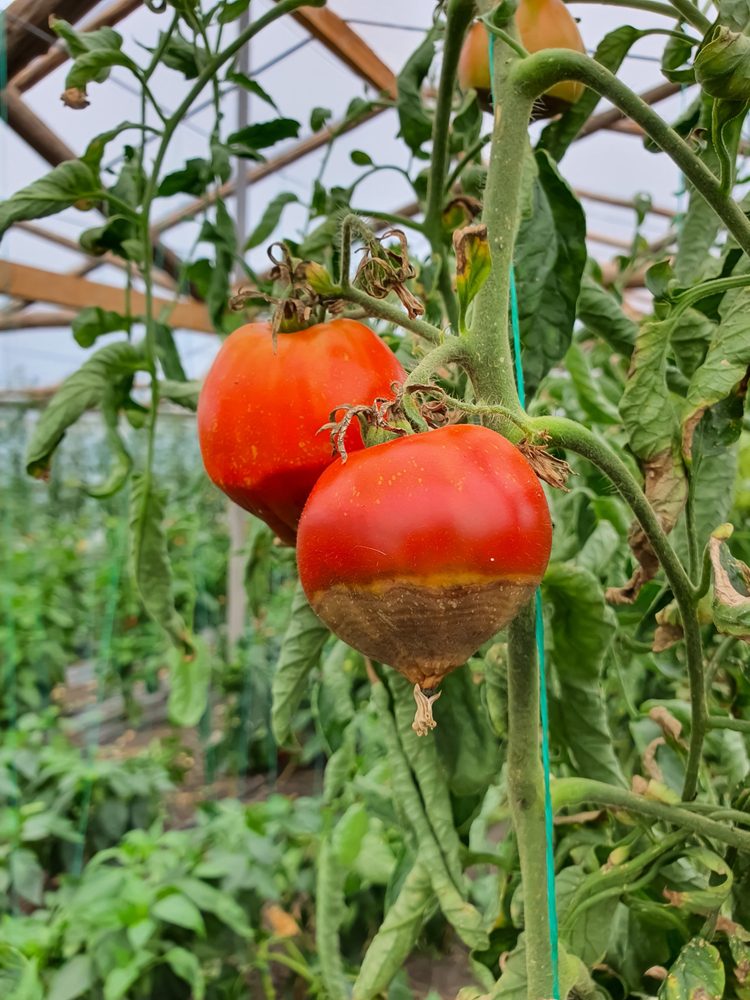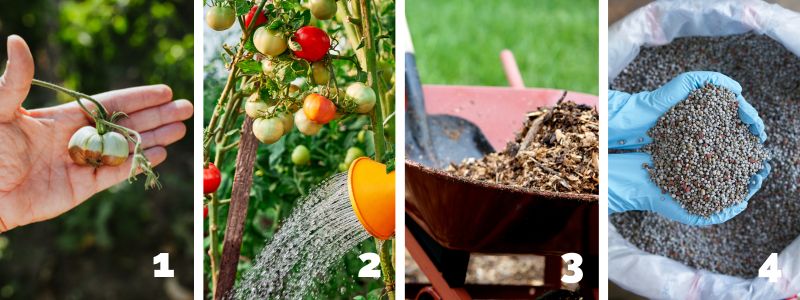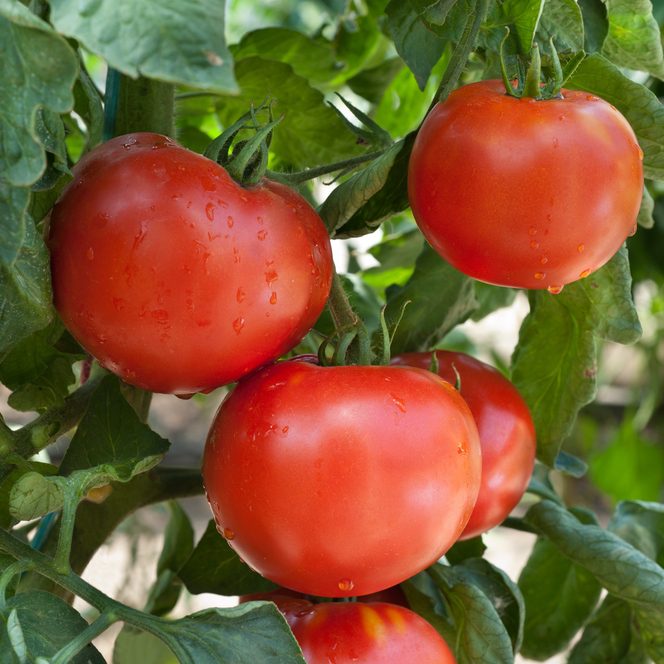Yikes! What is happening to my tomatoes?
As your garden tomatoes flourish and mature during the summer session, it’s important to remain vigilant for the occurrence of blossom end rot (BER). While it may initially resemble a disease, there’s no need to worry, as it is simply a manifestation of stress and inadequate calcium absorption caused by inconsistent moisture levels.
Calcium is the nutrient necessary for forming the skin of the fruit. Deformity results when the plant is unable to deliver the necessary calcium at the crucial phase of growth.
Typically, most gardens possess sufficient amounts of natural calcium in their soil. However, if water availability becomes either too limited or excessive throughout the season, it becomes crucial to closely observe and manage the situation to guarantee that your tomatoes receive adequate nourishment during their rapid growth phase.
It can be so confusing and demoralizing when we discover the emergence of brown or black blemishes on the lower part of growing fruits. This widespread issue affects various vegetable plants, including tomatoes, peppers, squash, cucumbers, and melons. Use the same watering advice below to stop end rot on these crops too.
The Icky Appearance of Blossom End Rot
Termed as tomato rot, this condition initially appears as a dampened area on one end of the fruit, located where the initial blossom was, which progressively expands into sunken, leathery brown spots. It will look like the tomatoes are rotting on the vine. In some cases, these spots can be infected by secondary pathogens, resulting in the development of black fuzzy growths and ultimately leading to complete fruit decay.

Ways to Remedy and Prevent Blossom End Rot
Thankfully, this problem does not transfer from plant to plant, allowing for timely intervention to effectively manage its impact.

- Remove Damaged Tomatoes. As soon as you notice blossom end rot on your tomato plants, promptly remove the affected tomatoes. By doing so, you prevent them from continuing to grow and consuming the plant’s resources. This allows the plant to allocate its energy towards producing healthy, rot-free fruits.
- Enhance your Watering Routine. To effectively address blossom end rot, it is crucial to adjust your watering practices and ensure proper hydration for your tomato plants. Follow consistent watering practices. Avoid letting the plants dry out completely and strive to maintain moist soil, striking a balance to prevent excessive wetness. Water the plants at ground level rather than using overhead watering methods. Overhead watering can create favorable conditions for soil-borne diseases, which can weaken the entire plant and negatively impact growth and yield.
- Implement Mulching. Applying mulch around your tomato plants serves to conserve moisture in the soil. Opt for organic mulches like weed-free straw, grass clippings, peat moss, or wood chips. These materials create a protective layer that helps retain soil moisture, reducing the risk of blossom end rot and promoting healthy plant development.
- Fertilize. The use of fungicides and pesticides is useless for this problem. You may need to add fertilizer with specific calcium contents. When applying fertilizer, it is recommended to follow these suggestions:
- Opt for a fertilizer with higher calcium content: Calcium plays a vital role in preventing blossom end rot.
- Choose nitrate nitrogen over ammonium nitrogen: Ammonium nitrogen has the potential to contribute to blossom end rot, while nitrate nitrogen is a better option.
- Avoid excessive fertilization during early fruiting: Balancing the fertilization to avoid excessive nutrient supply is crucial during this period.
- Minimize root disturbance: Refrain from cultivating or digging near the plant roots as it can cause damage. Root damage effects the plant’s ability to absorb water and nutrients properly, which can increase the risk of blossom end rot.

Although it can be bothersome and disappointing, blossom end rot can be effectively treated and prevented. If detected early, you still have a good chance of achieving a successful tomato crop!
For folks who decide to play it extra safe, our Heirloom Druzba Tomato is resistant to BER, so give it a try!